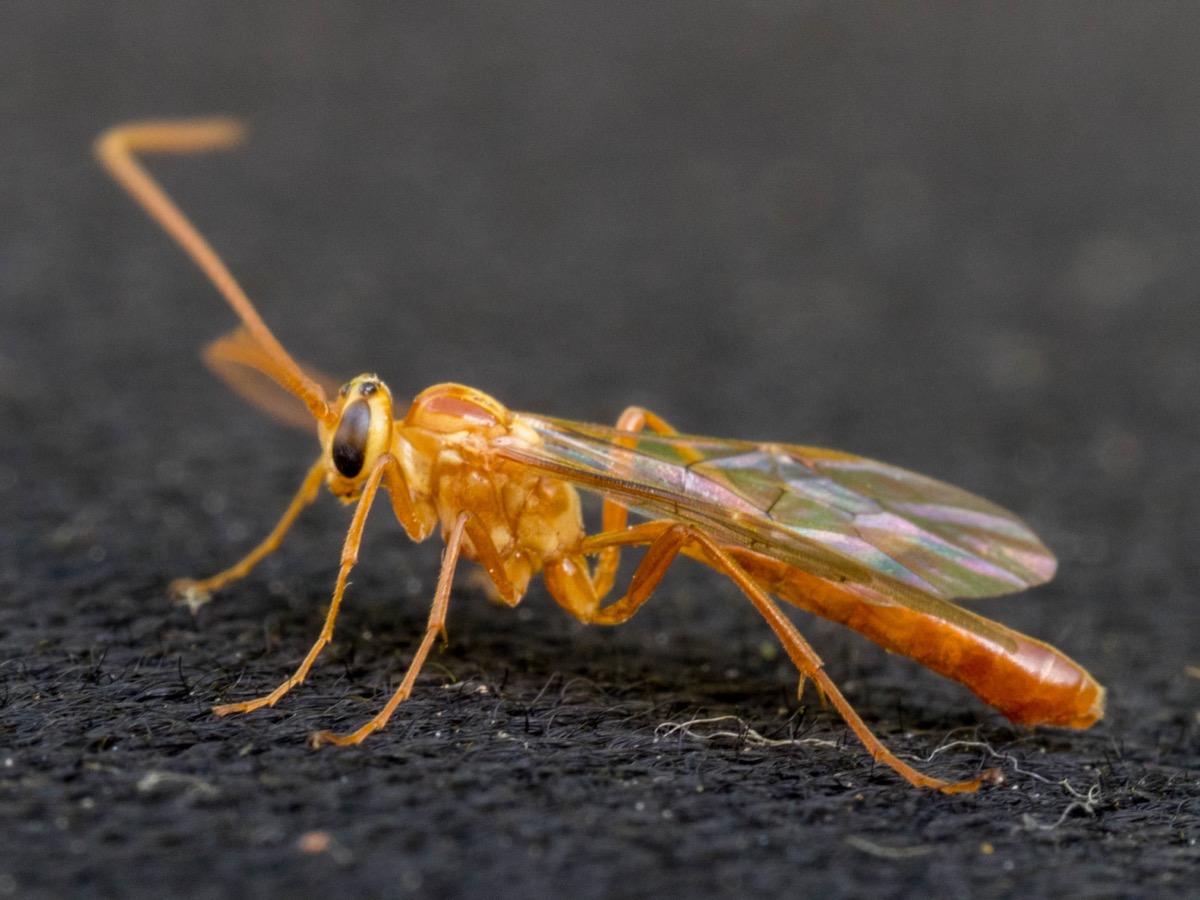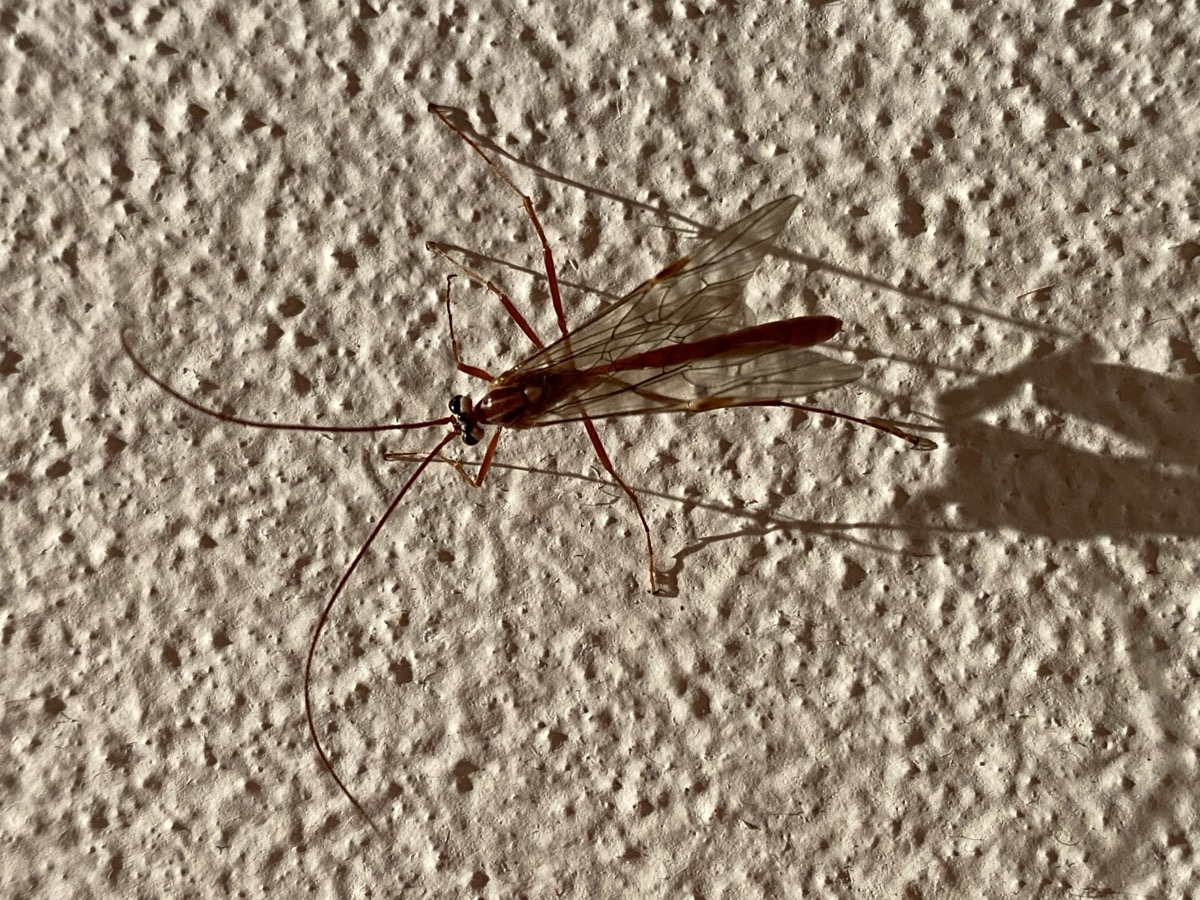Characteristics
- Size varies: from 5 to over 30 mm
- Slender body, often black or brown, sometimes red or yellow
- Long, threadlike antennae
- Sometimes very long ovipositor (in certain species)
- Complex wing venation (important for identification)
Habitat
Ichneumonidae can be found in:
- Forests, edges, hedgerows, and meadows
- Gardens, fallow lands, orchards, and crop fields
- Any habitat that hosts suitable insect larvae (caterpillars, beetles, various hosts)
Biology
- Parasitoids of larval or pupal stages of other insects
- Two main strategies:
- Koinobionts: the host continues to live after egg-laying
- Idiobionts: the host is paralyzed or killed immediately upon egg-laying
- Fine host detection via vibrations or chemical signals
- Some species lay eggs in wood or under bark (e.g., Rhyssa persuasoria)
Common Genera
- Ichneumon – Type genus, highly diverse
- Pimpla – Parasitoids of lepidopteran chrysalises
- Ophion – Large nocturnal wasps, parasites of caterpillars
- Netelia, Amblyteles, Rhyssa, Aoplus, etc.
Distinctive Features
- Extremely high species diversity (over 25,000 species described, likely twice that in reality)
- Presence of a submarginal groove on the thorax (often used in identification)
- Essential for natural control of pest populations
- Discreet behavior, often little known to the public despite their abundance

